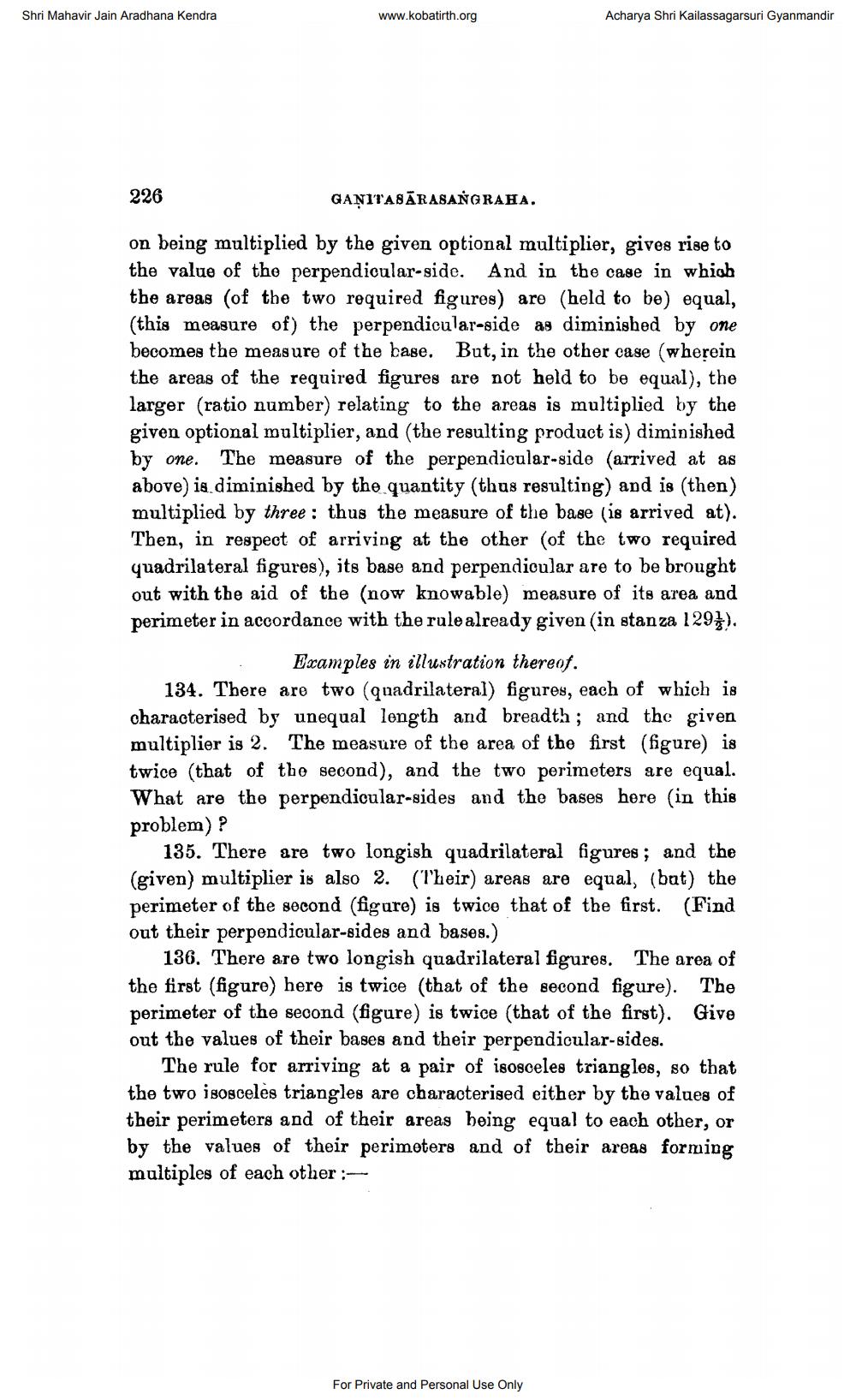________________
Shri Mahavir Jain Aradhana Kendra
www.kobatirth.org
Acharya Shri Kailassagarsuri Gyanmandir
226
GAŅITASĀRASANGRAHA.
on being multiplied by the given optional multiplier, gives rise to the value of the perpendicular-side. And in the case in which the areas (of the two required figures) are (held to be) equal, (this measure of) the perpendicular-side as diminished by one becomes the measure of the base. But, in the other case (wherein the areas of the required figures are not held to be equal), the larger (ratio number) relating to the areas is multiplied by the given optional multiplier, and the resulting product is) diminished by one. The measure of the perpendicular-side (arrived at as above) is diminished by the quantity (thus resulting) and is (then) multiplied by three : thus the measure of the base (is arrived at). Then, in respect of arriving at the other of the two required quadrilateral figures), its base and perpendicular are to be brought out with the aid of the (now knowable) measure of its area and perimeter in accordance with the rule already given (in stanza 129}).
Examples in illustration thereof. 134. There are two (quadrilateral) figures, each of which is characterised by unequal length and breadth ; and the given multiplier is 2. The measure of the area of the first (figure) is twice that of the second), and the two perimeters are equal. What are the perpendicular-sides and the bases here (in this problem)?
135. There are two longish quadrilateral figures ; and the (given) multiplier is also 2. (Their) areas are equal, (bat) the perimeter of the second (figare) is twice that of the first. (Find out their perpendicular-sides and bases.)
136. There are two longish quadrilateral figures. The area of the first (figure) here is twice that of the second figure). The perimeter of the second (figure) is twice (that of the first). Give out the values of their bases and their perpendicular-sides.
The rule for arriving at a pair of isosceles triangles, so that the two isosceles triangles are characterised either by the values of their perimeters and of their areas heing equal to each other, or by the values of their perimeters and of their areas forming multiples of each other :
For Private and Personal Use Only




